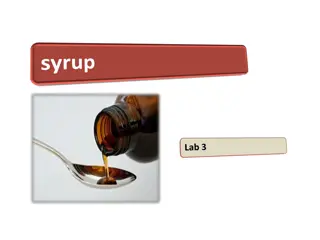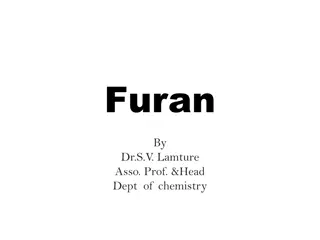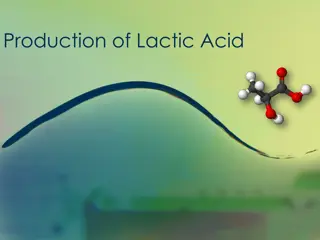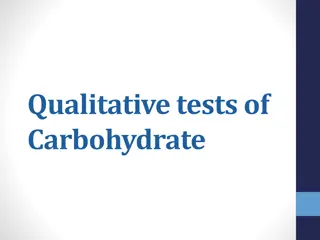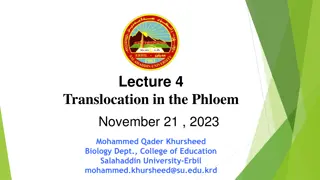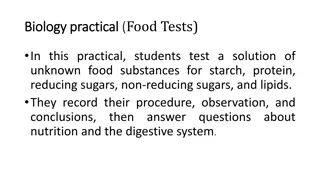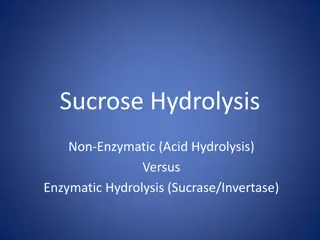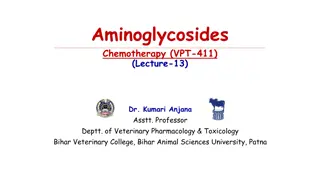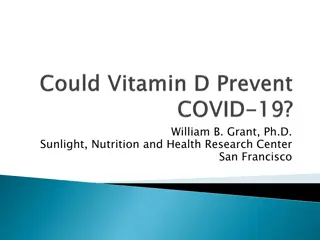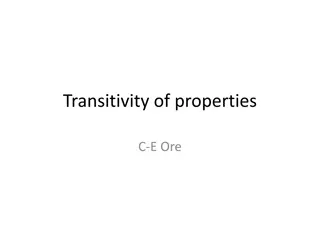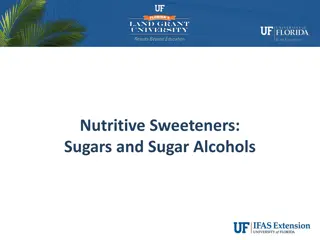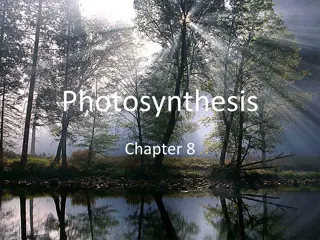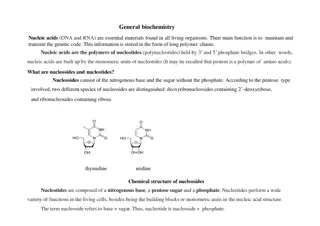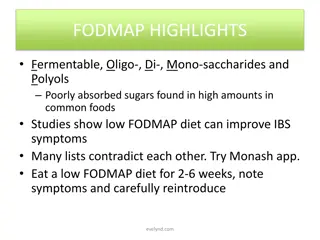Understanding Reducing Properties in Sugars
Reducing properties in sugars are a key concept in chemistry, especially in testing for the presence of aldehydic or ketonic groups. The experiment explores tests like Benedict's and Barfoed's, as well as the principles behind how reducing sugars interact with cupric hydroxide. Monosaccharides are highlighted as strong reducing agents, affecting the color changes in tests based on sugar concentration.
Download Presentation

Please find below an Image/Link to download the presentation.
The content on the website is provided AS IS for your information and personal use only. It may not be sold, licensed, or shared on other websites without obtaining consent from the author. Download presentation by click this link. If you encounter any issues during the download, it is possible that the publisher has removed the file from their server.
E N D
Presentation Transcript
EXPERIMENT 6 Reducing properties Reducing properties
REDUCING PROPERTIES TESTS: Benedict'sTest Barfoed's Test
INTRODUCTION: Reducing Properties: *A reducing sugar is sugar that has free or potentially free aldehydic or ketonic group.
THE REDUCING SUGARS INCLUDE: 1-All of the simple sugars (monosaccharides). 2-A few of the disaccharides (including lactose and maltose, but not sucrose because it has no free aldehyde or ketone group). 3-None of the polysaccharides. hydrolysis of polysaccharides and sucrose makes them reducingagents
BACKGROUND *When blue cupric hydroxide in alkaline liquid is heated, it's converted into insoluble black cupric oxide, but, if a reducing agent like certain sugars is present, the cupric hydroxide is reduced to insoluble yellow or red cuprous oxide.
1/Benedict's Test: *Carbohydrate with a free or potentially free aldehyde or ketone group have reducing properties in alkaline solution. *In addition monosaccharides act as a reducing agent in weakly acid solution. Benedict modified the original Fehling's test to produce a single solution which is more convenient for tests, as well as being more stable than Fehling'sreagent. Benedict's test is a rapid and generaltest for reducing sugars. .
MONOSACCHARIDESS PROPERTIES: -Monosaccharidesarestrongerreducing agentstowardsCu++ thanthedisaccharide -Monosaccharides act as areducing agent in weakly acidsolution.
PRINCIPLE: Cu +++ Reducing sugar Cu2O(insoluble yellow to red sugar ) N.B. this test is done under alkaline ph and heat conditions.
NOTE ON THE RESULT: The concentration of the sugerafects the color of thetest. green orange red brown blue-sugar absent; green-0.5% sugar; yellow-1% sugar; orange-1.5% sugar; brick red-2 % or more sugar.
*Benedict's reagent composed of copper sulphate and sodium citrate, made alkaline with sodium carbonate. *Sucrose does not reduce Benedict's solution, because it has no free aldehyde or ketone group.
PROCEDURE: A) 1%Starch 1%Lactose 1%Sucrose 1%Fructose 1%Xylose 1%Glucose Blank 1ml 1ml 1ml 1ml 1ml 1ml 1ml Benedict'sreagent 5ml 5ml 5ml 5ml 5ml 5ml 5ml Incubate in boiling water bath for 5mins. Observe changes in the color of solutions and formation of any precipitate. For sucrose and starch, do acid hydrolysis, then run again with Benedict's reagent.
B) HYDROLYSISSTEP: 1% Starch 1% Sucrose 5ml 5ml HCL (3M) 10 drops 10drops Incubate for 5 mins. In boiling waterbath Take 1 ml Benedict'sReagent 5ml 5ml Incubate in boiling water bath for 5mins. Compare the results with those obtained withoutacid treatment.
2/Barfoed's Test: *Monosaccharides are stronger reducing agents towards Cu++ than the disaccharide. This test is positive with solutions ofall monosaccharides of con. 0.1% and above. *Sucrose very easily hydrolyzed by the dilute acid reagent and the librated fructose is exceedingly reactive in this test. Disaccharide do not produce any reduction unless they are present in very highcon. Aldose and ketose sugar reduce this reagent, but hexoses act more rapidly and more vigorously than reducing disaccharide.
REAGENT COMPONENTS: BARFOED'S COMPONENT FUNCTION Acts as a source of Cu++ copperacetate. aceticacid Provides the low ph (acidic). *Barfoed's reagent composed of copper acetate in acetic acid. *By use of the Barfoed's reagent we can distinguish monosaccharides from disaccharides by controlling such conditions as PH and time of heating.
PRINCIPLE: Cu ++ + Reducing sugar Cu2O (a reddish precipitate) This test is done under acidic ph and heat conditions *Under the acidic conditions of the Barfoed's test, the cuprous ion precipitates to the red cuprous oxide which settles to the bottom of the tube. (The solution still remains dark blue).
PROCEDURE : A) 1%Starch 1%Maltose 1%Sucrose 1%Fructose 1%Xylose 1%Glucose Water 5ml 5ml 5ml 5ml 5ml 5ml 5ml Barfoed'sReagent 5ml 5ml 5ml 5ml 5ml 5ml 5ml Mix, incubate all the tubes in boiling water bath for 3.5 mins(or more). Note any change in color or clarity of thesolution. Red Precipitate = positive
B)HYDROLYSIS STEP 1% Starch 1% Sucrose 2 ml 2 ml Barfoed's Reagent 5 ml 5 ml Incubate in boiling water bath for 3.5 mins (or more) Note any change in color formed or clarity of solution Red Precipitate = positive




